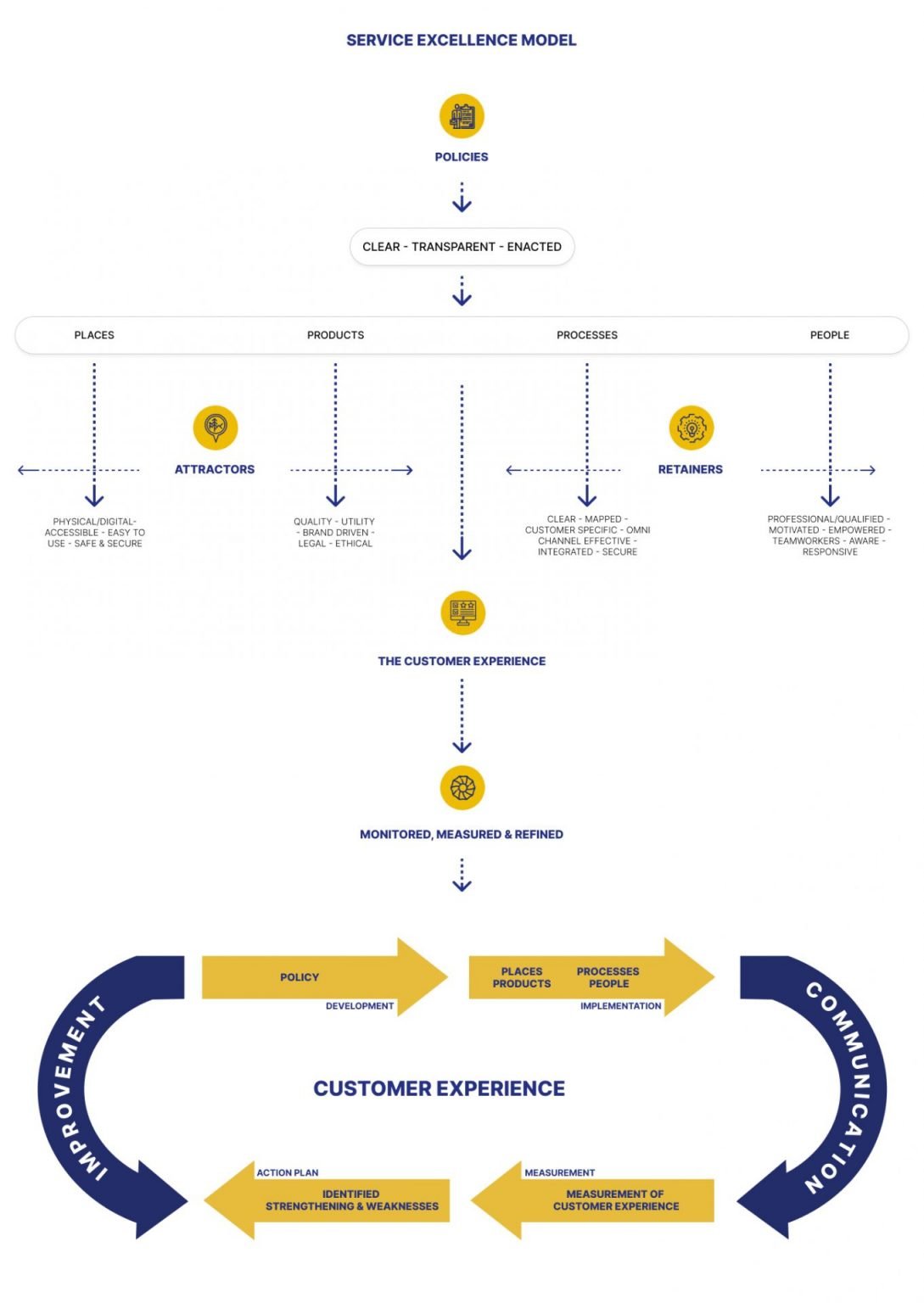
For private sector organisations in a competitive world, a high standard of customer service and experience is often the key differentiator.
At the same time, public sector organisations also need to show that they are responsive, reliable and respectful to consumer needs.
The outcome of a customer’s experience heavily influences their loyalty to your brand. This is why it is essential for an organisation to understand:
What does the customer journey look like through every channel?
Which parts contribute negatively or positively to the experience?
How is the actual customer experience created?
What are the elements in the customer journey that are most important to the customer?
How can you positively improve the customer experience?
The factors directly influencing the customer experience are the 5 pillars of the Service Excellence Model. These emphasise the importance of key elements which need to be manage
ICXS ELEMENTS
Policies
How do your objectives and strategies facilitate the best customer experience?
Places
Do all delivery channels facilitate customer service excellence?
Products / Services – Physical Services
Are the products/services design according to the quality, needs and expectations of the customer?
Performance Results
How happy and satisfied are customers and employees?
Processes & Customer Journey Maps
How effective are your processes in delivering the desired results to customers across all channels? Are the customer journey maps defined and measured?
People
Are employees skilled and motivated to satisfy customers’ needs? Do you take customer happiness into consideration when developing customer journeys?
Measurement of Performance
Do you have a means of defining foundations for customer experience, service excellence and employee happiness?
Structure of ICXS2019
Each element and section of ICXS2019 has several criteria/clauses. Each of these has a brief descriptive title which assists in identifying the criterion throughout the assessment, implementation and reporting process.
Furthermore, under each criterion, there is a statement, that the organisation needs to demonstrate has been implemented and adopted.
These statements provide the direction on what customer-focused organisations should be doing to achieve improvements in customer experience and customer service excellence.
However, the list of requirements detailed in each section provides clear guidance on how the stated goals should be achieved.
Scoring model for ICXS2019
The scoring system of the ICXS2019 consists of 1,000 Points – distributed among each of the 7 sections. This is split according to their contribution to service excellence delivery.
By reviewing the results, your organisation can develop an accurate priority list – ensuring resources are used efficiently to improve standards across the board.
Criteria
Available Points
Policies
100
Places
100
Products / Services
100
Processes & Customer Journey Maps
200
People
200
Measurement of Performance
200
Performance Measurement Results
100
Total
1000
But What Does This Mean?
This scoring concept allows an accurate assessment of your performance against ICXS2019 and is designed to ensure consistency above all else.
Performance
Explanation
0% – 24.9%
Zero evidence of the requirements being achieved.
25% – 49.9%
Evidence of the requirements obtained through DOCUMENTATION
50% – 74.9%
Evidence of COMMUNICATION with employees and other relevant interested parties.
75% – 89.9%
Evidence of IMPLEMENTATION of the requirements.
90% – 100%
Evidence of employees ADOPTING the requirements.

